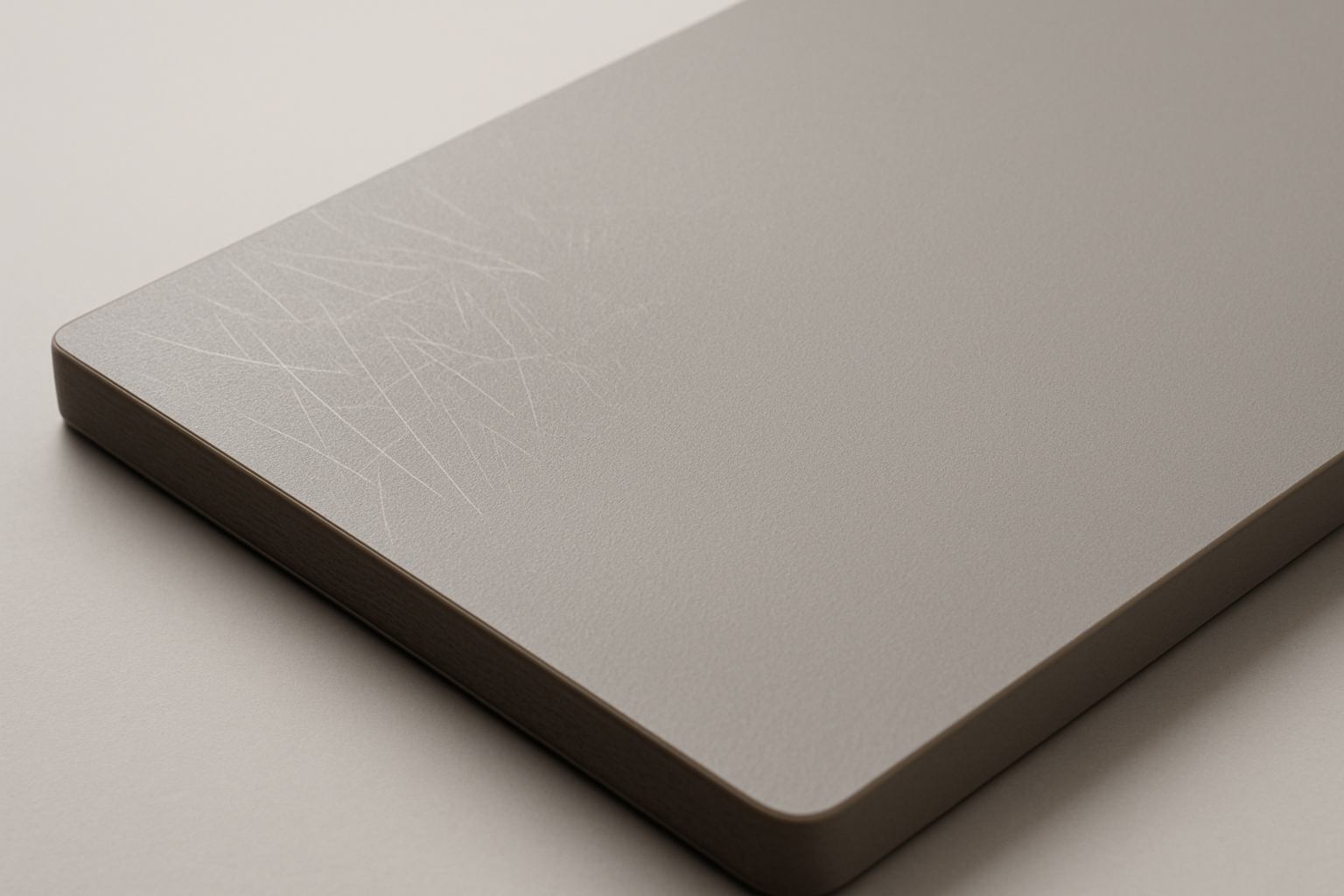Thermal Healing

Thermal Healing
Discover how ONEDTL Thermolaminate’s thermal healing feature repairs micro-scratches with mild heat, ensuring long-lasting, flawless surfaces for your interiors.
Thermal Healing: How ONEDTL Thermolaminate Repairs Itself (Yes, Really)
We all know the heartbreak: your brand-new furniture gets scratched, and suddenly, that seamless finish doesn’t look so perfect anymore. Whether it’s from everyday use or a careless slip of the hand, surface damage can quickly take the shine off your carefully chosen interiors.
But what if those scratches could disappear? What if your laminate could literally heal itself?
At DesignTree, we’ve made that possible.
What Is Thermal Healing?
Thermal healing is a unique property built into ONEDTL Thermolaminate that allows micro-scratches on the surface to repair themselves when mild heat is applied. Yes, you read that right—minor damage like light abrasions or scuff marks can fade away, restoring the laminate to its original smooth finish.
It’s not magic. It’s advanced material science.
How Does It Work?
The top layer of ONEDTL Thermolaminate is made from a specially engineered thermoplastic surface that responds to heat. When exposed to a warm object like a hot cloth, hairdryer, or even light ironing (with a protective sheet in between), the surface relaxes and resets—effectively “healing” the scratch.
This feature not only keeps your surfaces looking newer for longer, but also reduces the need for replacements, reapplications, or touch-ups.
When Is It Useful?
Note: Thermal healing works best on superficial scratches and should not be used as a substitute for proper surface care or handling.
Why It Matters
For architects, interior designers, and furniture manufacturers, ONEDTL’s thermal healing isn’t just a cool feature—it’s a practical advantage. It means greater product lifespan, reduced maintenance costs, and surfaces that continue to look flawless even in high-use environments.
At DesignTree, our goal has always been to create smarter, more resilient materials for everyday spaces. With thermal healing, we’re one step closer to surfaces that last—and perform—beautifully.


